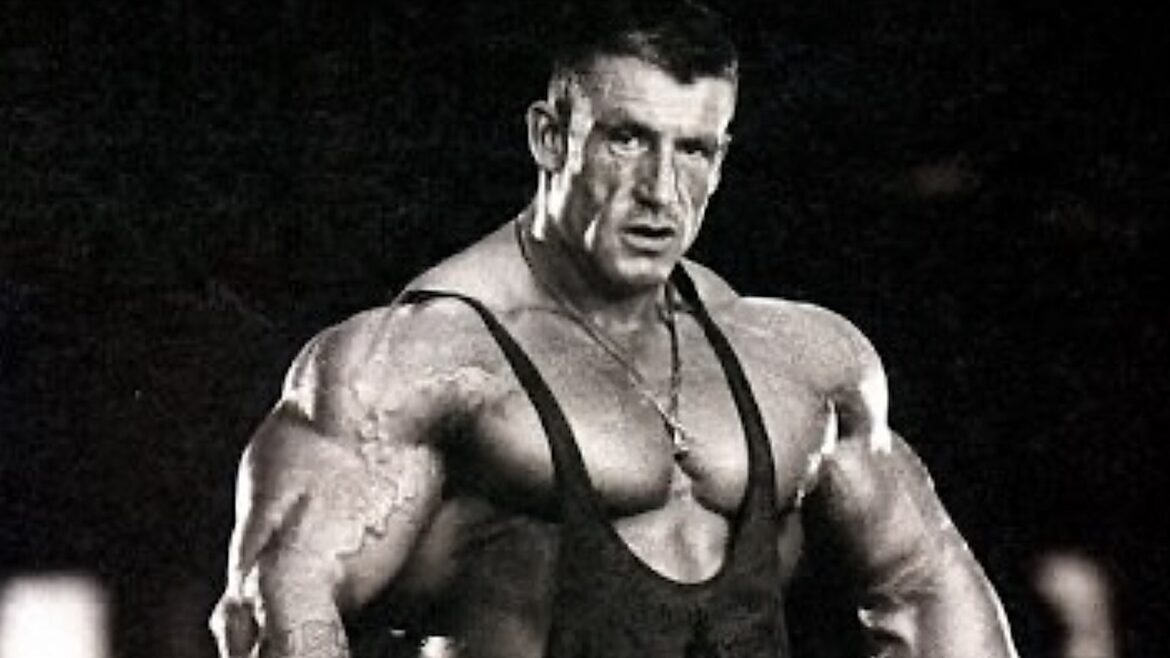Yates doesn’t believe lunges activate the quads as well as squats.
Dorian Yates‘ unparalleled size and muscle density revolutionized bodybuilding, earning him six consecutive Mr. Olympia titles (1992-97) and a devoted fan base that still follows his training advice. Yates retired after his final victory as one of only four champions in history to leave the stage as the reigning Mr. Olympia.
As the original Mass Monster, Yates followed a strict workout plan known as “Blood & Guts,” famous for its emphasis on heavy weights and low volume. To grow the type of muscle Yates was after, he championed plenty of meat-and-potato compound lifts, like squats, bent-over rows, and the incline bench press.
- That said, there were two exercises that didn’t make the cut: upright rows and lunges.
“Never done upright rows; silly, silly exercise. Is it a bit of biceps? Traps? Delts? It’s a nothing exercise,” Yates once said. “Upright rows and lunges: silly exercises. Waste of time.”
Yates vs. Upright Rows
Yates raised the question of which muscles the upright row targets. Instead of what he sees as a wasted movement, He recommends dumbbell bent-over flyes instead to target the rear delts.
Research indicates that upright rows primarily engage the biceps, upper back, and shoulders, with a wider grip increasing activation in the traps and deltoids. (1) However, many experts argue that the risks to shoulder health outweigh the potential muscle-building benefits. Excessive internal shoulder rotation in upright rows can contribute to shoulder impingement issues.
A study published in the Journal of Strength and Conditioning Research advises against lifting beyond a 90° angle during upright rows to reduce the risk of subacromial impingement syndrome. (2) Additionally, improper form, especially when using heavy weights, significantly increases the likelihood of injuries.
[Related: 3 Reasons Why Upright Rows Are Bad]
…and the Case Against Lunges
Yates also believes lunges offer little value to bodybuilders and waste time. From a bodybuilding perspective, he argues that lunges are largely ineffective, serving only to improve balance and mobility rather than building muscle.
He explained that training legs is about engaging the quads and hamstrings, and he argued that lunges do neither effectively.
Lunges are beneficial for athletes involved in sports that require balance, but for bodybuilders, they fail to allow the quads to reach muscular failure. Research suggests that training to muscular failure is efficient for muscle hypertrophy; however, it did not show any significant advantages to non-failure training. (3)
Growing the quads requires isolating their stimulus so that they can fatigue under load. To achieve this, Yates recommends squats.
When you do a squat and sit down flawlessly, it is 10 times better than lunges.
—Dorian Yates
Lunges may not be Yates’s go-to exercise, but they still hold value in a well-rounded training program. A 2020 study published in the Journal of Sport Rehabilitation found that lunges activate the quads and hamstrings more than squats (4). However, because lunges require greater balance and coordination, squats are generally more practical for lifting heavier weights.
More Bodybuilding Content
References
- McAllister, M. J., Schilling, B. K., Hammond, K. G., Weiss, L. W., & Farney, T. M. (2013). Effect of grip width on electromyographic activity during the upright row. Journal of strength and conditioning research, 27(1), 181–187. https://doi.org/10.1519/JSC.0b013e31824f23ad
- Kolber, M. J., Cheatham, S. W., Salamh, P. A., & Hanney, W. J. (2014). Characteristics of shoulder impingement in the recreational weight-training population. Journal of strength and conditioning research, 28(4), 1081–1089. https://doi.org/10.1519/JSC.0000000000000250
- Santanielo, N., Nóbrega, S. R., Scarpelli, M. C., Alvarez, I. F., Otoboni, G. B., Pintanel, L., & Libardi, C. A. (2020). Effect of resistance training to muscle failure vs non-failure on strength, hypertrophy and muscle architecture in trained individuals. Biology of sport, 37(4), 333–341. https://doi.org/10.5114/biolsport.2020.96317
- Wu, H. W., Tsai, C. F., Liang, K. H., & Chang, Y. W. (2020). Effect of Loading Devices on Muscle Activation in Squat and Lunge. Journal of sport rehabilitation, 29(2), 200–205. https://doi.org/10.1123/jsr.2018-0182
Featured image: @thedorianyates on Instagram
